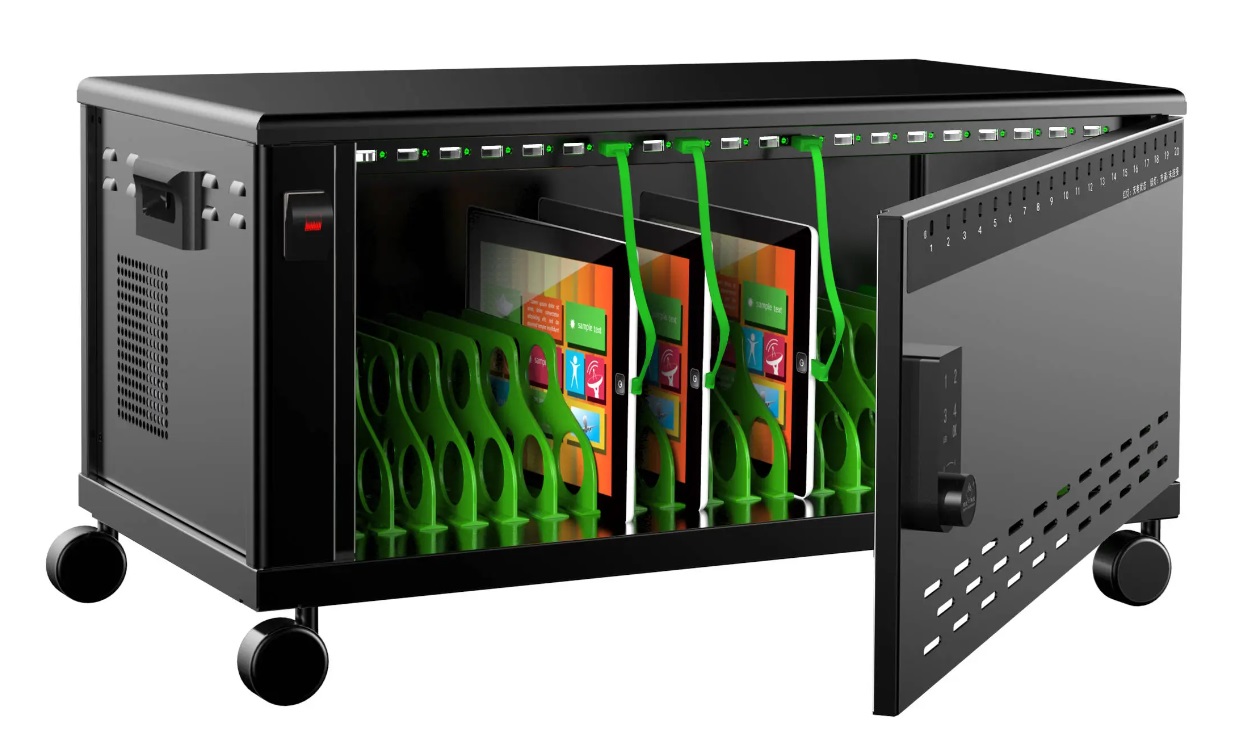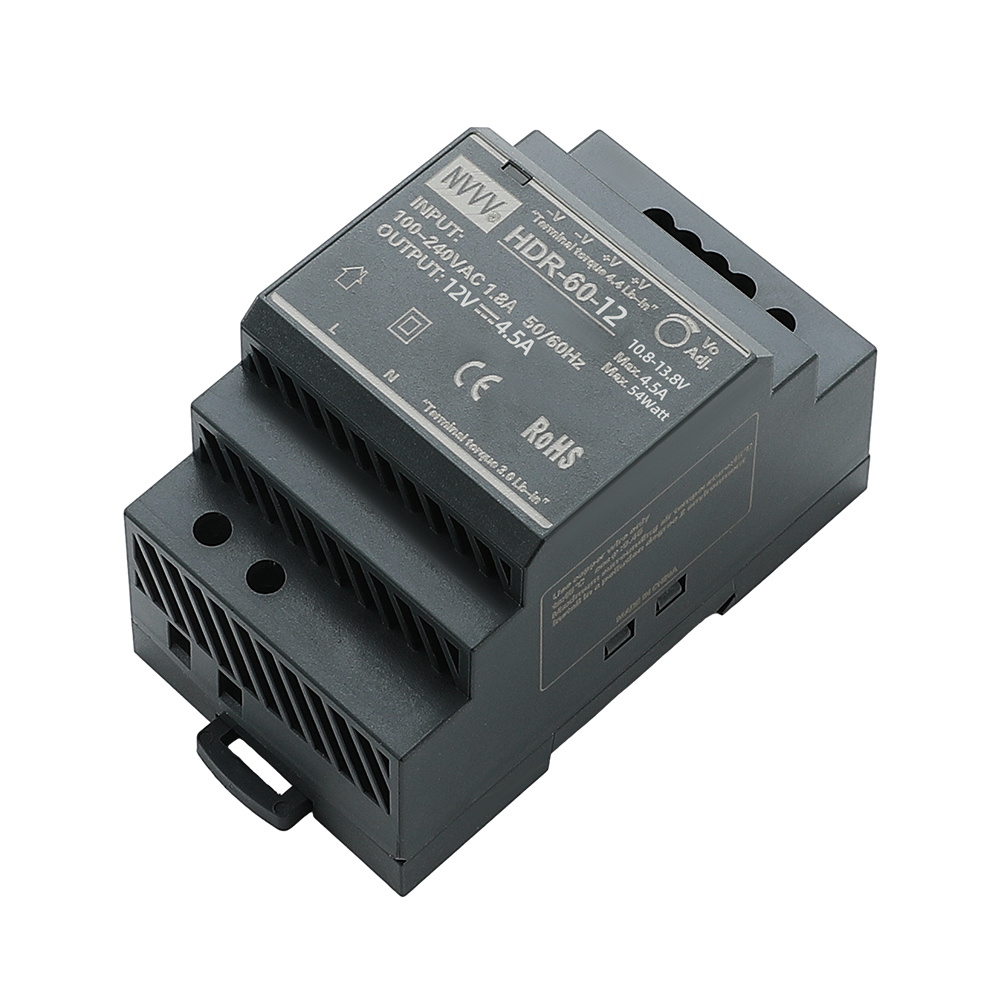Is a switching power supply (SMPS) better than a transformer?
In the application of modern electronic equipment and industrial equipment, the choice of power supply is crucial. Switching Mode Power Supply (SMPS) and traditional transformers have always been two common power supply solutions. In equipment such as school network laptop charging cabinets, 3D printers, embroidery machines and watering machines, the choice of power supply directly affects the performance, volume and cost of the equipment. So, is the switching power supply really better than the transformer? This article will analyze the efficiency, volume, weight and cost through a detailed comparison to help everyone better understand the advantages and disadvantages of the two power supplies.
1. Is the switching power supply really more efficient than the transformer?
The efficiency of the power supply directly affects the operating cost and heat dissipation of the equipment. In many applications, efficient power supplies can reduce energy waste and heat generation, thereby improving the performance and reliability of the equipment. Taking the school network laptop charging cabinet as an example, the power supply efficiency requirements for charging multiple devices at the same time are very high.
Efficient working principle of switching power supply
The switching mode power supply adjusts the output voltage by high-speed switching and high-frequency transformation. Due to the high operating frequency, usually between 20kHz and 1MHz, the required transformer and filter can be made very small and the loss is also low. Its efficient working principle enables switching power supplies to generally achieve 80% to 95% efficiency.
For example, in a network laptop charging cabinet, if a switching power supply is used, when multiple laptops are charged at the same time, the efficient conversion of the switching power supply can ensure stable output while reducing power waste. In comparison, the efficiency of traditional transformers is usually between 60% and 80%, with more power loss and more obvious heat dissipation problems of the equipment.
Transformer efficiency and limitations
Traditional transformers operate at a low frequency, usually between 50Hz and 60Hz. This means that they require a larger iron core and copper coil to complete power conversion, resulting in relatively low efficiency. For equipment that runs for a long time, such as embroidery machines or watering machines, the low energy efficiency of the transformer will lead to higher energy consumption and equipment overheating.
However, the transformer has a simple structure and is suitable for some application scenarios that do not require high efficiency. For equipment such as 3D printers that require stable power supply but do not require efficient energy conversion, the stability and low noise performance of the transformer still have certain advantages.
Efficiency comparison in practical applications
In practical applications, such as school network laptop charging cabinets, the high efficiency of switching power supplies can reduce total energy consumption and reduce heat dissipation requirements. For devices that require continuous power supply for a long time, such as watering machines or 3D printers, the advantages of switching power supplies are more obvious. In contrast, although transformers still have their value in some special applications, they are difficult to match the efficiency of switching power supplies.
Therefore, switching power supplies do have advantages over transformers in terms of high-efficiency energy conversion and reduced energy waste, especially in scenarios where multiple devices run in parallel and high-efficiency requirements are particularly prominent.
2. Is the volume and weight of switching power supplies really lighter?
For many modern devices, such as 3D printers and embroidery machines, the control of volume and weight is very important. Especially in portable devices or school environments, the compact design of the power supply not only saves space inside the device, but also reduces the cost of transportation and installation.
Compact design advantages of switching power supplies
The high-frequency working mode of the switched mode power supply enables it to use smaller components to complete the power conversion. Compared with traditional transformers, switching power supplies are usually smaller and lighter. This makes switching power supplies particularly suitable for use in devices with limited volume, such as school network laptop charging cabinets and 3D printers.
Take 3D printers as an example. The internal space is limited and the power supply must be compact enough to make room for other mechanical components. The small size design of the switching power supply allows 3D printers to reduce the overall size of the device without sacrificing performance. Traditional transformers are bulky and difficult to integrate in space-constrained situations because they require larger cores and copper wires.
Volume and weight limitations of transformers
Traditional transformers are large in size and weight, especially high-power transformers, which require more core and coil materials. In some large equipment that requires continuous power supply, such as industrial-grade embroidery machines or large irrigation machines, the size and weight of the transformer may become a major obstacle to equipment design.
In this case, the transformer not only takes up more internal space, but also may increase the overall transportation and installation costs of the equipment. For example, irrigation machines usually need to work in outdoor environments, and larger transformers may increase the protection and fixing costs of the equipment.
Comparison of volume and weight in application scenarios
In portable devices and space-constrained scenarios, such as school network laptop charging cabinets or 3D printers, the volume and weight advantages of switching power supplies are obvious. In these applications, the compact design not only saves space, but also provides more possibilities for the expansion of other functions.
In contrast, in some fixed installation equipment that does not emphasize volume and weight, such as embroidery machines or large watering machines, although the transformer may appear bulky, its simple structure and stable performance are still the choice of many engineers.
3. Is the cost of switching power supply more advantageous than transformer?
Cost is a key factor affecting the selection of power supply. When schools or factories choose power supplies, they should consider not only performance but also budget. Switching power supplies and transformers differ in cost structure, and their cost-effectiveness in different application scenarios also has its own characteristics.
Cost structure of switching power supply (SMPS)
The design of switching power supply is more complex, and it contains multiple modules such as rectifier circuit, filter circuit, high-frequency transformer, control circuit, etc. Therefore, in terms of initial cost, switching power supply is usually higher than traditional transformer. However, since switching power supplies can significantly improve energy efficiency, the long-term power cost is relatively low, especially for equipment that requires long-term continuous power supply, such as watering machines or embroidery machines, the energy saving effect is obvious.
Taking 3D printers as an example, although the initial cost of switching power supplies may be high, due to its efficient energy conversion and low heat dissipation requirements, the electricity costs saved in long-term use can offset its initial cost investment.
Cost structure of transformers
The structure of transformers is relatively simple, the manufacturing process is mature, and the cost is relatively low, especially in low-power applications. For example, for some simple electrical equipment or low-power machinery, transformers are still an economical choice.
However, as the power demand of the equipment increases, the cost of the transformer will also increase accordingly. Especially in high-power equipment, the demand for transformer core and coil materials increases, and the manufacturing cost also increases accordingly. In addition, transformers may require additional heat dissipation devices in scenarios with high efficiency requirements, further increasing the total cost.
Relationship between cost and application scenarios
In some cost-sensitive scenarios, such as small household appliances or equipment with low efficiency requirements, the low cost advantage of transformers is obvious. However, in scenarios that require long-term operation or high energy requirements, such as school network laptop charging cabinets or industrial equipment, the long-term energy-saving benefits of switching power supplies make them more cost-competitive.
For example, a school network laptop charging cabinet may need to charge dozens of devices at the same time every day. Choosing an efficient switching power supply can not only reduce the total energy consumption, but also reduce the cost and maintenance of cooling equipment. In contrast, if a transformer is used, although the initial cost is lower, long-term energy consumption and heat dissipation problems may cause additional expenses.
4. How to choose the right power supply in practical applications?
In many application scenarios, the choice of power supply is not only based on efficiency, volume, weight and cost, but also needs to consider the specific needs of the equipment, the use environment and the stability of long-term operation. Taking network laptop charging cabinets, 3D printers, embroidery machines and watering machines as examples, let's see how to make choices in practical applications.
Power supply selection in school network laptop charging cabinets
School network laptop charging cabinets are usually used for centralized management and charging of multiple devices at the same time. Due to the large number of devices, the power supply must have efficient and stable output, and a compact design is required to save space. In such applications, the advantages of switching power supplies are very prominent.
First, the high-efficiency energy conversion of the switching power supply can ensure that even if multiple devices are charged at the same time, the energy waste is minimized, reducing power consumption and costs. In addition, the small size of the switching power supply can provide more space inside the charging cabinet for heat dissipation and installation of other components. In contrast, the transformer is large in size and is not suitable for charging cabinets with tight space. At the same time, its low efficiency is not suitable for charging multiple devices at the same time.
Power requirements of 3D printers
3D printers require power supplies to provide continuous and stable power output, because current fluctuations during printing may affect the printing quality. The switch mode power supply has obvious advantages in this scenario, mainly because it can provide precisely regulated output voltage and current, and due to its efficient energy conversion, it can also reduce the overall power consumption and heat generation of the 3D printer.
At the same time, the small size and lightweight design of the switching power supply are also very suitable for 3D printers, because the space inside the printer is very limited, especially for desktop printers. The switching power supply can be easily embedded in the device, freeing up more space for other mechanical structures. The large size and heavy weight of traditional transformers limit their use in such devices.
Power supply selection for embroidery machines
As industrial equipment, embroidery machines often need to run uninterruptedly for a long time, so the stability and durability of the power supply are particularly important. In this scenario, both switching power supplies and transformers have their own advantages and disadvantages. Switching power supplies are suitable for some small embroidery machines or portable embroidery equipment due to their high efficiency and lightweight characteristics. However, for some large embroidery machines, the stability and anti-interference ability of traditional transformers may be more advantageous.
In large equipment, transformers can withstand longer workloads due to their simple structure and reliable operation mode, and have strong anti-interference ability to power grid fluctuations. This is very important for stable power supply in industrial environments.
Conclusion
In summary, switching power supplies and transformers have their own advantages and disadvantages. In efficient, compact and portable equipment, such as school network laptop charging cabinets, 3D printers, etc., switching power supplies undoubtedly perform better. In some scenarios that focus on stability, durability and anti-interference ability, such as large embroidery machines and outdoor irrigation equipment, transformers are still a reliable solution.













